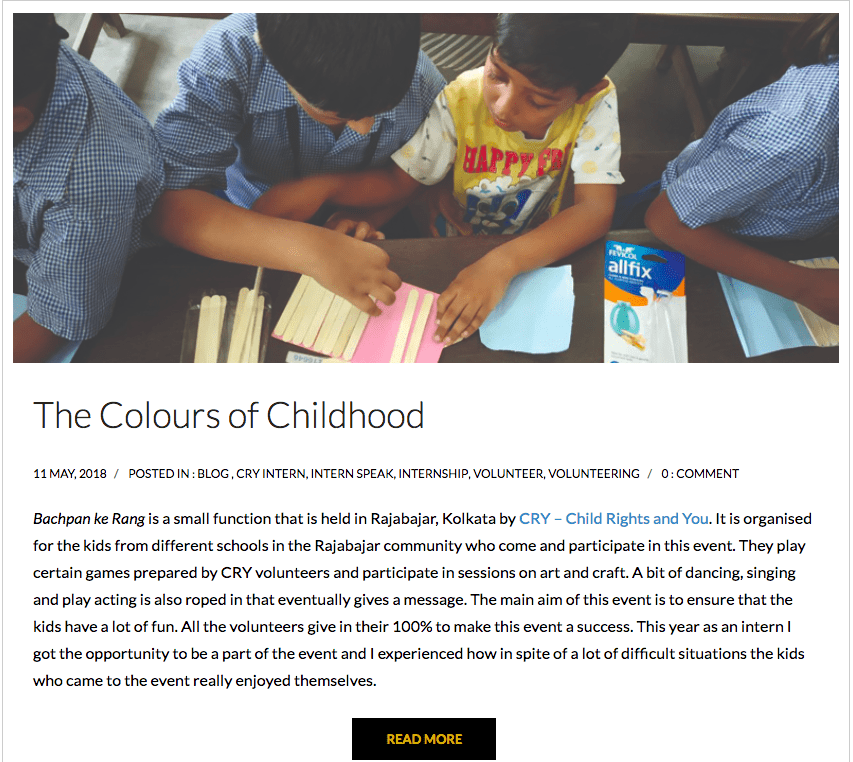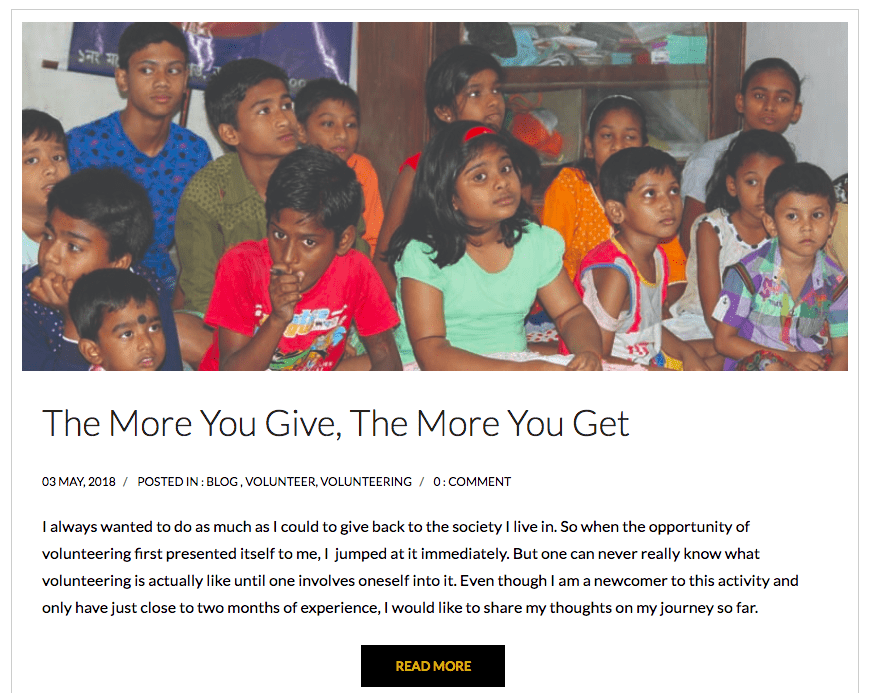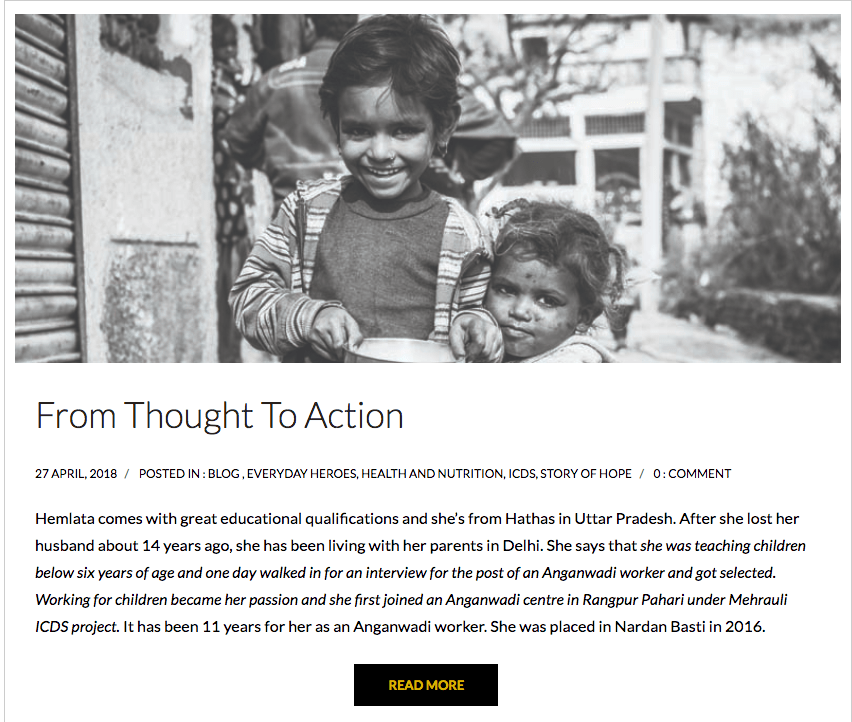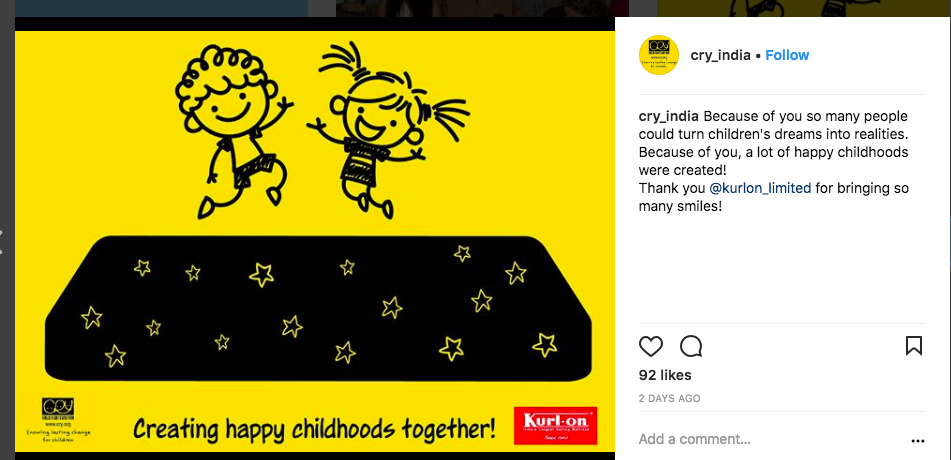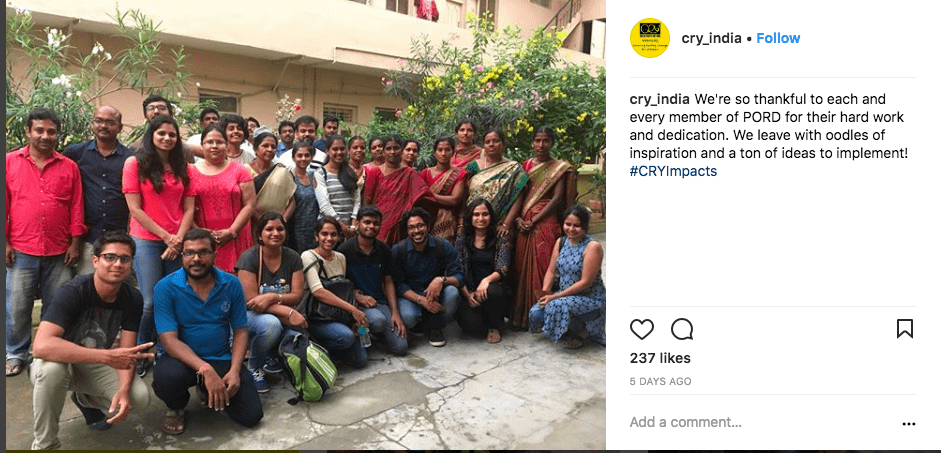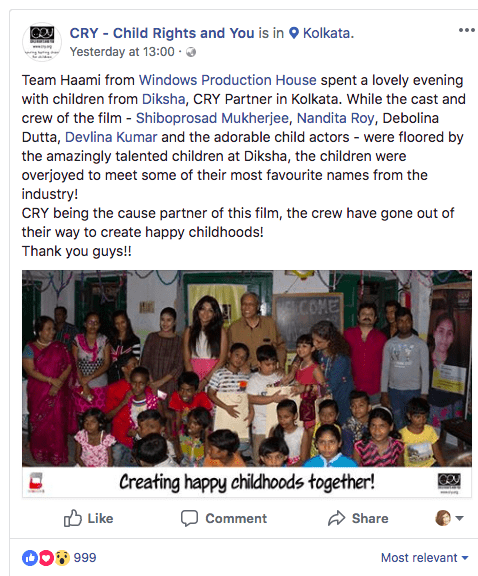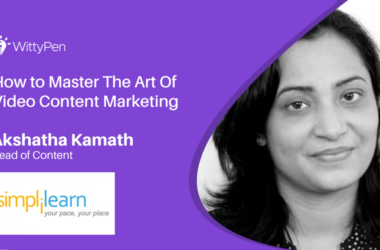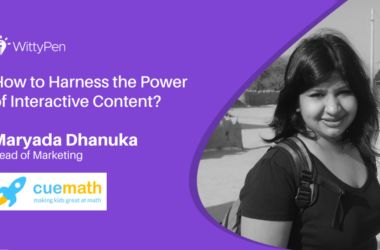Last updated on December 30th, 2021
“This post is a part of our Content Salad series, where we invite industry experts to share their knowledge. The content marketing insights of CRY – Child Right and You a top non-profit organization , is offered to give you a glimpse of the thought process of leaders in the industry and a chance to learn from the best”
Alankrita Khera is the Marketing & Communication Head for CRY, one of the most popular non-goverment organization in India. An MBA grad MBA grad from Welingkar Institute of Management, Mumbai, she is passionate about writing and currently working on a book that explores human relationships.
Content marketing for nonprofits is challenging.
A nonprofit organization has its mission and values that speak volumes. A content marketing strategy for nonprofits is needed to drive communications.
The key to communicating a compelling story about your nonprofit organization is developing a content marketing plan. Alankrita Khera from CRY talks to us about developing a content strategy for nonprofits.
About CRY
Child Rights and You is a top non-profit and non-government organization in India working towards the upliftment of underprivileged children across supported child welfare projects and engaged in restoring the children’s basic rights.
About Alankrita
After almost a decade in broadcast media, where she worked with the likes of Times, UTV and Viacom18, Alankrita decided to immerse herself in the non-profit sector – working towards better futures for marginalized children.
She is currently heading marketing and communications at CRY – Child Rights and You. A writer at heart, she is currently working on a book that explores human relationships and is passionate about travelling and immersive experiences. A vocalist trained in classical music, she spends her spare time advocating for animal welfare.
What is your definition of content marketing?
Content marketing, in my opinion, refers to the creation and distribution of content that is interesting and relevant to your target audience – with the objective of acquiring and retaining them as brand patrons.
Such content could be educational, insightful, inspirational or simply entertaining in nature; that doesn’t aim to push your target consumer to make a purchase decision but instead nudges you into their consideration set. Content marketing strategy isn’t just a mix of social media and blogs; it’s a combination of various different channel techniques in today’s context.
Videos, podcasts, emails, webinars, infographics, memes, quizzes, fun score generators, assessments – even books and movies! The Lego movie is a great example; it was essentially a product advertisement marketed in a way that made their TG want to consume it. And guess what, the subsequent increase in their sales offered proof of the pudding when they surpassed even Mattel!
We looked at some of the blogs by CRY, and we think they are very inspirational. Take a look at the blogs by CRY.
There is a huge increase in the growth of content marketing, what do you think about that?
Advertising today has become more of a nuisance for the average consumer than before. Want to buy a car? Switch on the television or open up Facebook and you’d be sampling a dozen different purchase prompts by a wide variety of brands – all vying for your elusive mind space.
A purchase decision effectively goes through 4 stages – awareness, research, consideration and finally the purchase itself. The period starting with awareness and going all the way to research is what Google calls the Zero Moment Of Truth. That point in the buying cycle where a brand isn’t aware of the potential consumer who is already looking them up in order to evaluate whether they fit in their consideration set or not.
This is the point where traditional advertising fails because of stimulus overload.
The consumer is seeing so many purchase prompts, all of which are effectively saying the same thing. This might lead to your brand getting no brand recall.
Marketers have begun to understand this; thus there has been a sudden spurt in content marketing, and it has become the buzzword for so many brands.
In fact, it’s also a great tool to aid the second moment of truth – which is essentially the point at which the consumer decides how his experience with your brand has been. Through content like product tutorials, FAQs and even community updates, you can ensure a holistic experience for your existing customers which, of course, aids retention.
Which aspect(s) of content marketing are the most important to you?
There isn’t any single aspect that warrants more importance than the other. As a marketer, I essentially like to follow a three-pronged process that starts with evaluating the objective of my content marketing strategy and identifying pain points that it aims to address my target audience.
Then will come the part of conceptualizing and creating the said content in a way that’s mapped to the said pain points and is interesting as well as relevant for my targeted audience. The final step will be building outreach and engagement for the same and analysing performance to make tweaks real time as and when required.
The one thing that encompasses this entire process is an understanding of your target group itself – demographics and psychographics that influence your strategy right from content creation to platforms for outreach. Content mapping to the customer journey is critical.
What according to you makes for a remarkable piece of content?
- An attention-grabbing title/headline – a sparkling introduction that fuels audience curiosity
- A topical and popular topic that’s relevant to and is customized for the identified audience base
- Something that creates value for the end user/viewer and has long-term rather than short-lived relevance
- A narrative that invokes emotion in addition to laying down facts – it increases the chances of the content piece being shared by the end user/viewer
- Something that establishes a unique opinion or perspective on behalf of the brand
- Short form content that tells a story – that is quick and relatable to the audience
Is there a need for you to constantly create new content?
For me, specifically in my current role, yes. The non-profit sector does not function like other industries; we’re not addressing a consumer pain point through a product or service. The idea of charity weighs on everyone’s mind as everyone wants to be a good citizen and do good for those who need it the most. But it is not a priority that drives regular/focused action in most of the cases.
A core non-profit marketing objective is to generate awareness about the problem and break the apathy around it to facilitate donor/volunteer action.
For this, it is essential to create content that catches your attention and stands apart and is very prevalent.
How important is it for you share content on social media?
Social media remains to be the biggest platform on which content marketing is hinged – especially if you do not have marketing budgets. And a non-profit needs to reach a massive amount of people within any said target segment. So, it is very important.
Instagram Posts of CRY
Facebook posts of CRY
What is more important – Evergreen Content or Viral Content?
In general, evergreen content has a longer shelf life than viral content. It can facilitate prolonged and sustained traffic and can control the context effectively without the brand running the risk of building up negative sentiment – which is often the case with viral content.
To be able to choose one depends on the brand and its objectives. Personally, however, I feel like brands should build a solid foundation of lasting engaging content that is mapped to their consumer base. Longevity always wins, in my experience.
Is there any campaign that you are proud of and would share with us?
At CRY, we created 16 short films in 2017-18 on either extremely negligible budgets or completely pro-bono thanks to the support of our partners. This film on child marriage won a gold at the Woodpecker Film Festival, this one helped us build salience around the issue of child labour, this reminded our audience that all children have dreams irrespective of their socio-economic background and this brought back the focus on girl child. Such content not only helped us raise our brand recall but also kickstarted conversations around the issues in question – through last year, our social media audiences have grown almost 4 times in size!
Check out their campaigns here.
CRY | Mothers Day Campaigns
CRY | The Power of Your Hands | Child Labour Campaigns
CRY | Dreams Unlimited Campaign
CRY | Women of Tomorrow Campaign
Any tips for marketers of today?
- When formulating your content marketing strategy, do not go solely by mass trends or ape what your competition is doing. The idea is to stand out in a way that’s specifically targeted to your target consumer. Understand your reader personas (those who’ll consume your content but may not necessarily buy). Then filter that understanding into a narrower set of buyer personas (a subset of the reader funnel who’re more likely to make a purchase decision). Then conceptualize your content marketing mix accordingly.
- Focus on quality over quantity. While you do not want to have long gaps between serving consumable content to your audience to keep them engaged, you also don’t want to fall prey to putting out stuff that isn’t valuable enough to your target consumer. Also, analyse how your content is doing regularly through website content audits against set key metrics – traffic, engagement and conversions. Your strategy should be fluid, not set in stone.
Conclusion
We would like to thank Alankrita for taking out the time to respond to our questions and telling us about content marketing for non-profits. Content Marketing for any industry is challenging, and Alankrita has given some valuable insights that are extremely beneficial to us and other content marketers out there.
If you want to get your content strategy right, download the e-book below.






